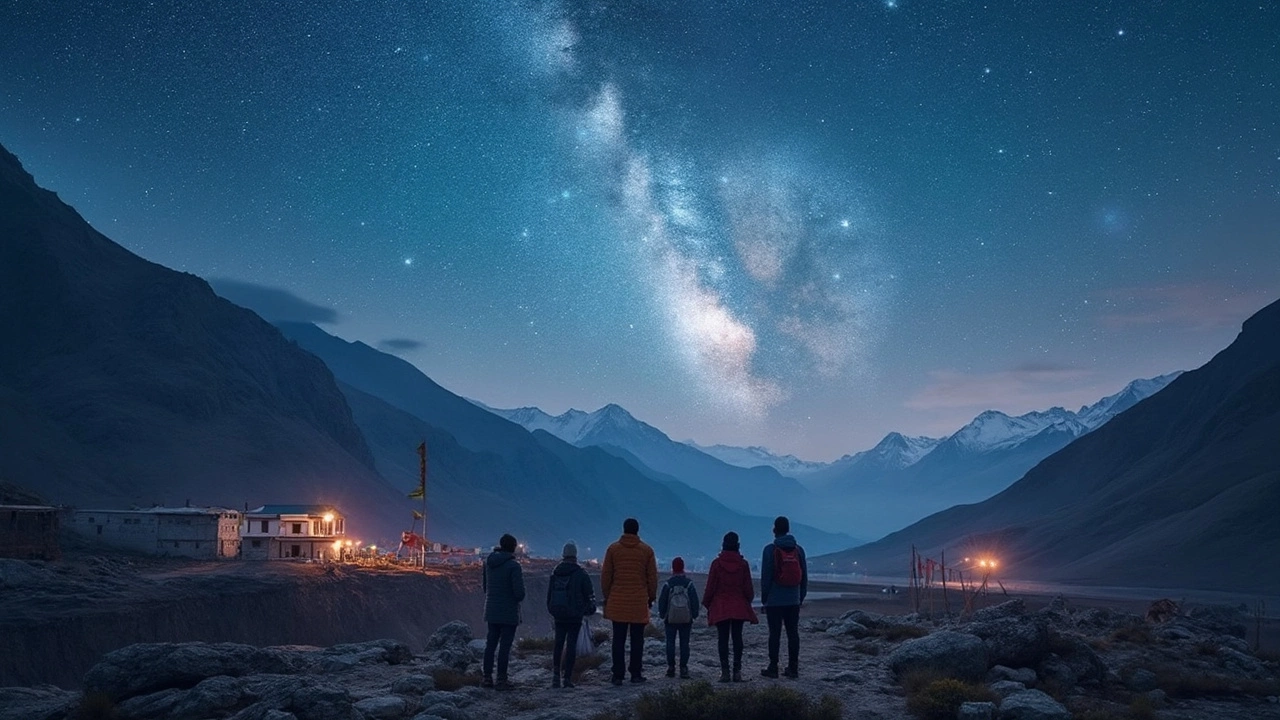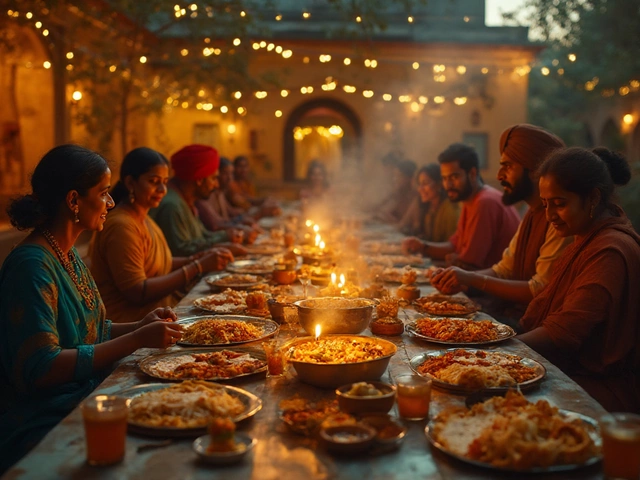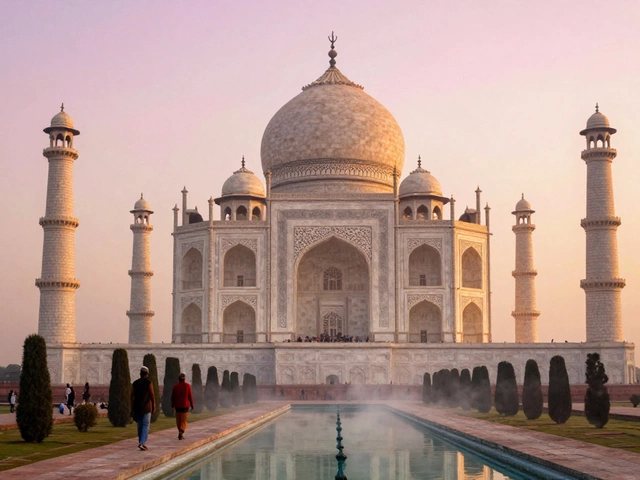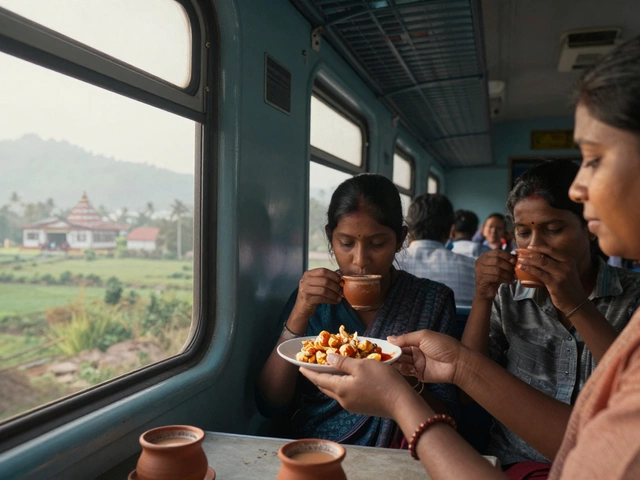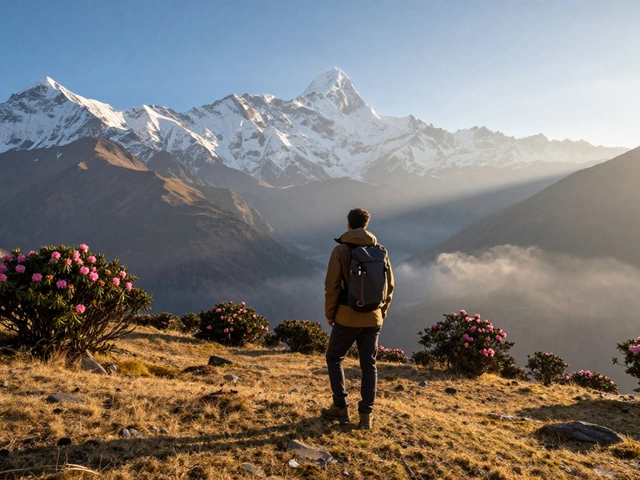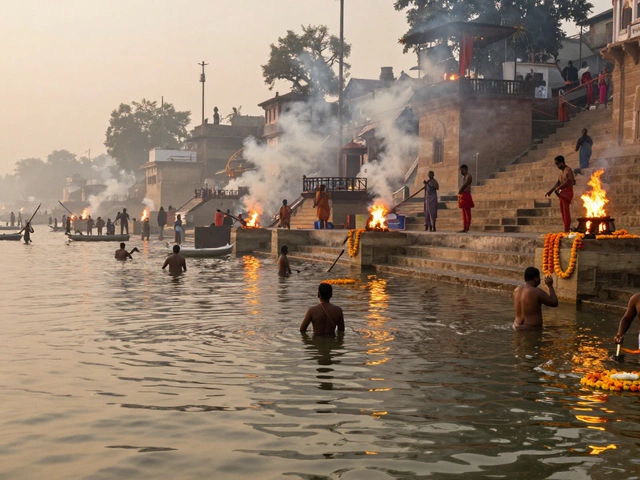If you’ve ever tried spotting the stars in an Indian city, you’ve probably noticed how most of them just don’t show up. That’s not because they vanished—it’s because of city lights drowning them out. Here’s where dark sky reserves step in. These are patches of land specially protected from artificial lights, making them some of the best spots on the planet if you want to see a truly star-packed sky with the naked eye.
India scored its very first certified dark sky reserve in Hanle, Ladakh, not too long ago, and it’s a total game-changer for local tourism. Think about it: thousands of stars spread over your head, clear views of the Milky Way, and zero glare from streetlights or neon billboards. Local hotels and homestays now gear up for night sky tours, giving visitors access to telescopes and astronomy guides. It’s the kind of experience that makes you forget all about your phone for a few hours. And honestly, that’s kind of rare these days.
- What is a Dark Sky Reserve, Really?
- Where India's First Dark Sky Reserve Sits
- Why This Spot in Ladakh Matters
- How to Get the Best Stargazing Experience
- Tips & Fun Facts for Night Sky Lovers
What is a Dark Sky Reserve, Really?
A dark sky reserve is a zone where efforts are taken to keep the night as natural and dark as possible. This means cutting down outdoor lighting to the bare minimum and using designs that don’t send beams up into the sky. The whole point is to protect the area from light pollution, which is the biggest reason most people can’t see many stars anymore. International organizations, like the International Dark-Sky Association (IDA), actually set the standards for what counts as a real dark sky reserve.
In simple terms: it’s not just about less light, it’s about smarter light. Outdoor lamps must be capped or shielded so they only light the ground, not the sky. Even basic rules—like no white or bluish lights at night—make a difference. Most importantly, the local community agrees to follow these rules, and there’s ongoing monitoring to keep the place star-friendly.
What really sets these places apart is the crazy difference in how many stars you can see. For example, a person in the middle of a city like Delhi might only see a few dozen stars on a clear night, but in a dark sky reserve, you can see thousands. It’s also the only way for most people to spot the Milky Way or even get a decent look at planets without any equipment.
Here’s a quick look comparing star visibility in regular spots vs. dark sky reserves:
| Location | Average Stars Visible to Naked Eye |
|---|---|
| Major City | ~200 |
| Suburbs | ~1,000 |
| Dark Sky Reserve | ~5,000+ |
Getting certified as a reserve isn’t easy—there’s paperwork, regular audits, and the whole local area needs to be on board. The reward is worth it though, because it gives people a chance to connect with nature, boosts tourism, and helps protect nocturnal wildlife too. For India, creating its own dark sky reserve means unlocking a totally new experience for both astronomy fans and regular travellers who’ve never seen the sky this clear before.
Where India's First Dark Sky Reserve Sits
India’s first dark sky reserve is right up in Hanle, Ladakh. This spot isn’t just another high-altitude village—it actually sits at around 4,500 meters above sea level. So, you’re basically closer to the stars here than almost anywhere else in the country. Hanle is tucked away in the Changthang Wildlife Sanctuary, far from the blinding glow of cities. To give you an idea, the nearest major town, Leh, is over 250 km away—keeping artificial lights to an absolute minimum.
What puts Hanle on the stargazer’s map is its seriously dry, clear skies. Ladakh hardly sees any monsoon rains, and pollution is practically nonexistent. Not surprisingly, the Indian Astronomical Observatory calls this place home, with one of the highest telescopes anywhere. For years, scientists have been coming here for space research, but now regular travelers can experience those epic night skies, too.
- Location: Hanle village, Changthang, Ladakh
- Altitude: About 4,500 meters (that’s higher than most Himalayan tourist spots)
- Type of area: Remote, low population density, little to no light pollution
Ladakh’s tourism board, the Indian Institute of Astrophysics, and local villagers all teamed up to get Hanle certified by the International Dark Sky Association. That means light use is now tightly controlled—streetlights, homes, and even guesthouses use special coverings and low-intensity bulbs at night.
| Fact | Details |
|---|---|
| Distance from Leh | About 250 km (8-10 hours by road) |
| Annual clear nights | Over 270 nights per year |
| Population of Hanle | ~1,200 people |
| Certified by | International Dark Sky Association (2022) |
Hanle’s location means fewer crowds, better visibility, and a much higher chance you’ll actually see the sky bursting with stars. No wonder this little Ladakhi village is now a dream stop for anyone who wants a real break from city lights.

Why This Spot in Ladakh Matters
So, what’s the big deal about Hanle in Ladakh becoming a dark sky reserve? Here’s the gist: Hanle sits at over 4,500 meters (almost 15,000 feet) above sea level, far away from city life and all those blinding streetlights. Thanks to its high altitude and dry atmosphere, there’s barely any dust or moisture floating around to mess with your view of the stars. Most nights here, the sky is clean, steady, and perfect for seeing even the faintest constellations.
This is also the site of the Indian Astronomical Observatory, one of the world’s highest research telescopes. Scientists come here from across the globe to study space, but now, travelers and stargazers can also get their moment under an actual star-filled sky. Authorities created rules limiting outdoor lights, making Hanle the best protected spot against light pollution in India.
Here’s what really sets Hanle apart:
- No glaring hotel signage or public streetlights—villages use minimal lighting, and only in warm tones that don’t mess with the night sky.
- The reserve’s remote location keeps both crowds and vehicle headlights to a minimum, so you aren’t dealing with noise or random flashes.
- Local community members got involved in setting it all up, so visitors can join guided sessions with amateur astronomers and even learn a thing or two about Ladakhi traditions around stars.
- Throughout the year, Hanle gets around 260 clear, starry nights—that’s almost three-quarters of the year, so your odds of a good show are high!
Simply put, Hanle wasn’t picked by accident. Its location, climate, and commitment from locals make it a one-of-a-kind place for night sky tourism in India. Ideal for anyone looking for a raw, unforgettable stargazing trip.
How to Get the Best Stargazing Experience
Nailing your night under the stars in India’s dark sky reserve needs a bit of planning. You don’t want to end up staring at clouds or shivering without the right jacket. Here’s how you can make your visit to Ladakh’s dark sky reserve seriously worth it.
- Pick the right season: The clearest skies in Hanle happen from June to September, when there’s less cloud cover. Winter has fewer tourists, but you’ll freeze—temperatures can drop way below zero.
- Avoid the full moon: Moonlight is beautiful but kills your chances of seeing those dim stars. Best time for stargazing is during a new moon or when the moon rises late.
- Stay overnight: Stargazing peaks around midnight to 2 a.m. Hanle’s homestays now offer basic but cozy stays, so you don’t have to rush your experience.
- Bring the right gear: Warm jackets are a must, even in summer. Carry a red flashlight instead of a regular one—it won’t mess with your night vision.
- Go with a guide: Local astronomy experts and even some trained villagers offer guided sky tours. It’s honestly so much better when someone points out Saturn’s rings or explains constellations in plain words.
Here’s a quick look at what you can expect from Hanle compared to a usual city sky:
| Location | Visible Stars With Naked Eye (Approx.) | Average Light Pollution (Bortle Scale) |
|---|---|---|
| Hanle Dark Sky Reserve | 5,000+ | Class 1 (darkest possible) |
| Mumbai | Less than 100 | Class 9 (brightest, worst for stargazing) |
| Bangalore suburb | About 300 | Class 7-8 |
Last tip—don’t try to snap the Milky Way with your phone camera unless it’s a newer model with “night mode.” For serious shots, you’ll want a DSLR, a wide-angle lens, and a tripod. But honestly, sometimes just lying back and staring up is the best way to enjoy it.
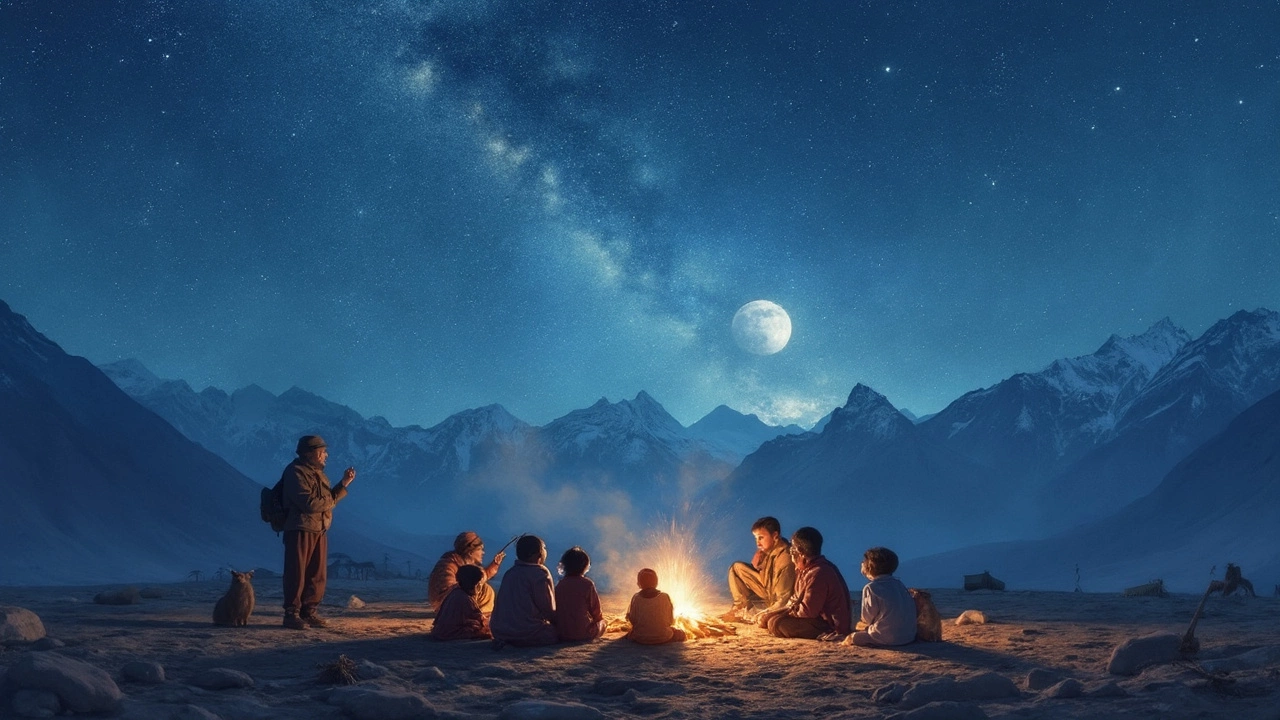
Tips & Fun Facts for Night Sky Lovers
Getting the most out of your trip to India’s dark sky reserve isn’t just about showing up after sunset. There are a few tricks and some cool facts that make your visit way more interesting.
- Pack warm clothes: Even though it’s India, Ladakh gets super chilly at night, especially at Hanle’s high altitude. Layer up so you’re not distracted by the cold.
- Plan around the new moon: The best stargazing happens when there’s no moonlight. Check a lunar calendar and aim for a few days before or after the new moon for the darkest skies and the most stars.
- Your eyes need time: Give your eyes about 20 minutes to adjust to the dark before you expect to see really faint stars. Avoid looking at your phone during this time—red filters or night mode settings help if you need some light.
- Carry binoculars or a basic telescope: You don’t need fancy gear to see amazing stuff. Even basic binoculars or a small travel scope can reveal craters on the Moon or the moons of Jupiter.
- Download a stargazing app: Apps like Stellarium or SkyView work offline and help you spot constellations, planets, and satellites while you’re out there. Super handy without a guide.
Now for some facts you might not know. Hanle Dark Sky Reserve sits at about 4,500 meters (14,764 feet), which means the air is thin and clean. That’s one of the reasons the sky is so clear out here—you get way less haze and pollution than in most places. This is also why the Indian Astronomical Observatory was built in Hanle way before the reserve got famous; it’s one of Asia’s highest observatories, by the way.
Skies this dark are rare. According to the Bortle scale (which basically ranks night sky darkness), the area scores close to class 1, meaning people can see the Milky Way in full color when conditions are just right. Not many folks get to see that in their lifetime without traveling far from civilization.
One last thing—Hanle villagers are part of the project, and they keep light pollution in check with LED lighting, dark curtains, and strict rules about outdoor lights. If you stay at a homestay, they’ll usually remind you to keep outdoor lights off after dark. It’s a whole community effort, and locals are pretty proud of it.
